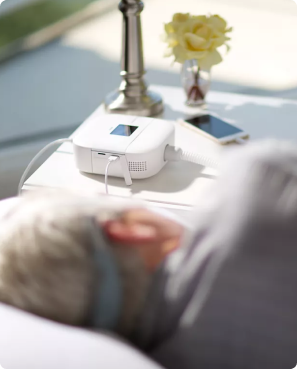Following a COPD Management Plan: The Basics
Whether you are new COPD patient or have been a patient for years, it is important that you follow a COPD management plan. Not only will this improve your overall health in the short term, but is a proactive approach to managing your disease long-term. Part of developing a COPD management plan is learning to talk to your doctor. You must learn how to assess the way you feel, but also how to properly take your medications and treatments. Each person deals with COPD in a different way; therefore, COPD can be tricky to manage. As a result, Southeastern Medical Equipment has provided for you this short guide, “Following a COPD
Management Plan: The Basics.”
Developing a COPD Action Plan

The first step in developing a COPD action plan is to learn how to talk about how you feel. If you cannot accurately tell your doctor how you feel, then he/she will not know how to help you. Consequently, The American Lung Association has developed a great worksheet to help you discern your level of wellbeing. You should discuss this worksheet with your healthcare provider on each visit. Not only will this help you in assessing how you are doing, but will help you to monitor the disease.
Set Attainable Goals
While the main goals of any COPD plan should include disease prevention and progression monitoring, it is important to set small, attainable goals. Consider these often-overlooked goals:
- Take medication consistently
- Drink enough water each day
- Get a short walk after lunch
- Eat meals at predetermined times
- Make sure concentrators and tubing are clean
A lot of COPD patients take the small things for granted. These small goals not help to improve your overall health, but can stave off future exacerbations. No matter what goals you make, just remember the success of the plan depends on the patient. If the patient does not follow the plan correctly, it will not work. Thus, when developing a COPD plan make sure it is easy to follow. The idea here is to not bite off more than you can chew. That being said, you should always try to minimize risks.
Minimize Risks

It should go without saying that you should minimize the risk factors that caused the COPD to begin with. This can mean cutting out or reducing the amount tobacco smoke you inhale. If you want to quit smoking, consult your doctor. He or she can offer ways to quit that make the process easier and reduce the need to smoke. Other ways to minimize risk and slow the
progression of COPD include the following:
- making sure your home is properly ventilated
- cutting down on the use of harsh cleaning agents that pollute the air
- change air filters in your home regularly
Managing Exacerbations
The main goal of your COPD management plan to treat exacerbations. Exacerbations are going to happen, yet many can be avoided if a detailed COPD management plan is followed. When exacerbations occur, make sure you take the time to revise your current COPD plan. Updating it regularly will improve your health. Remember: communication with your doctor is the key to improving your symptoms, and it important to tell your doctor how you feel. Sure, there may be a certain amount of frustration about restrictions with what you can and cannot do on a daily basis, yet the COPD management plan is a must if you are to live your best life.





